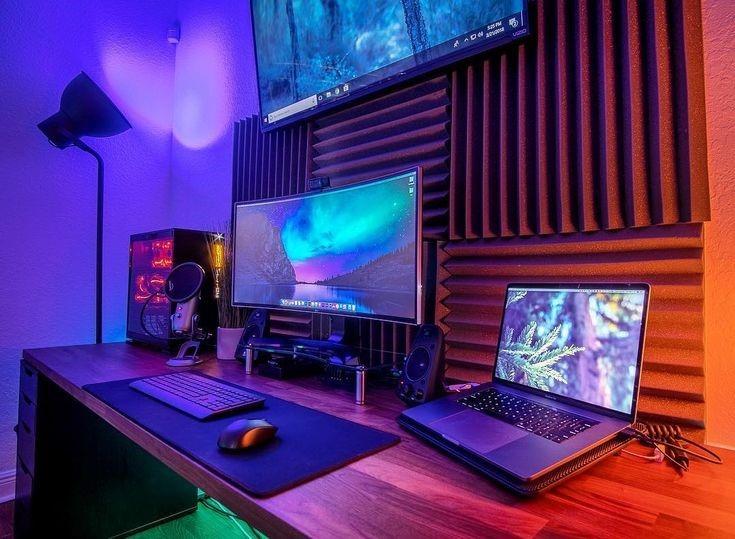Laptops and PCs are constant fixtures in the ever-evolving world of technology, influencing how we work, play, and interact with the outside world. These computers have become indispensable in our daily lives, from the ultrabooks that redefine portability to the gaming laptops that push the limits of performance. This article examines the wide range of laptops and PCs, looking at the advancements that have shaped their development as well as their many classifications.
1. The Rise of Ultrabooks: Where Portability Meets Performance
As the pinnacle of style and performance, ultrabooks satisfy consumers who need the ideal balance of power and portability. With their innovative parts and durable batteries, these light and thin laptops are revolutionising the conventional laptop experience. Producers such as Apple, Dell, and HP have jumped on the ultrabook bandwagon, churning out machines with powerful processing power without sacrificing style.
The success of ultrabooks can be attributed to their focus on mobility. Solid-state drive (SSD) technology has advanced to the point where devices like these are perfect for professionals who are constantly on the go since they boot up quickly and allow for smooth multitasking. The ultrabook category is defined by its sleek appearance and robust performance, which are best shown by the MacBook Air, Dell XPS series, and Lenovo ThinkPad X1 Carbon.
2. Gaming Laptops: Unleashing Unprecedented Performance
Gaming laptops have emerged as the preferred tool for players who want performance comparable to a desktop computer in a small device. With their strong processors, high-refresh-rate displays, and top-tier graphics cards, these powerful machines deliver an immersive gaming experience that can equal that of traditional gaming PCs.
By pushing the limits of graphics technology, NVIDIA and AMD have made it possible for gaming laptops to provide amazing images and realistic gameplay. In order to improve the gaming experience, companies like Alienware, MSI, and ASUS ROG have established the standard for gaming laptops by adding features like mechanical keyboards, powerful cooling systems, and RGB lighting that can be customised.
Even though they are frequently larger and bulkier than ultrabooks, gaming laptops provide unmatched performance for those who won’t settle with subpar frame rates and visual quality. The market’s constant competition for gaming laptops encourages innovation by guaranteeing that each new model delivers more power and features to satiate the ravenous appetite of the gaming community.
3. Traditional PCs: A Time-Tested Workhorse
Even with the popularity of gaming laptops and ultrabooks, classic desktop PCs are still necessary for many people. These workhorses are the preferred alternative for experts in industries like software development, graphic design, and content creation because of their unparalleled processing power and customizable features.
Because desktop PCs are modular in nature, customers can replace individual components, making their system flexible enough to meet changing technological needs. The opportunity to personalise every element of their computers, from the processor and graphics card to the cooling system and RGB lighting, is what makes the DIY (Do It Yourself) PC construction community thrive.
Because of desktop PCs’ dependability, security, and centralised management features, businesses also rely on them. Although laptops are portable, desktop computers are superior in terms of raw processing power and stability, which makes them essential for activities requiring high-performance computing.
4. The Hybrid Trend: 2-in-1 Laptops and All-in-One PCs
The computing industry has seen the rise of hybrid devices, which conflate the functions of laptops and desktop computers. Users can effortlessly transition between laptop and tablet modes thanks to the flexible design of 2-in-1 computers, including the Lenovo Yoga series and Microsoft Surface Pro. This adaptability serves those who need the ease of a tablet and the productivity of a laptop at the same time.
Conversely, all-in-one PCs do away with the necessity for a separate tower by integrating the computer components into the monitor. Products that highlight the visual appeal of this design and provide a space-saving, compact option for those who prefer an integrated setup are the Dell Inspiron series and the Apple iMac.
5. Future Trends: The Road Ahead for Laptops and PCs
The future of laptops and PCs promises even more innovation as technology progresses. Computing devices that use machine learning and artificial intelligence (AI) will improve user experiences by optimising performance according to user preferences and usage patterns.
The goal of sustainability is also having an impact on how laptops and PCs are designed and made. To lessen the impact of these products on the environment, manufacturers are looking into recyclable packaging, energy-efficient parts, and eco-friendly materials.
Furthermore, how we interact with computing devices will be further redefined by the ongoing convergence of the PC and mobile ecosystems. A single user experience that makes switching between laptops, tablets, and smartphones simple will result from seamless integration.
In summary, laptops and PCs are still evolving, meeting a variety of consumer demands and preferences. The computer world is full of possibilities, ranging from gaming laptops that redefine performance standards to ultrabooks that prioritise portability, classic desktop PCs that offer unprecedented capability, and more. The next chapter in the always changing history of laptops and PCs will be shaped by the convergence of technology and the pursuit of sustainability.



